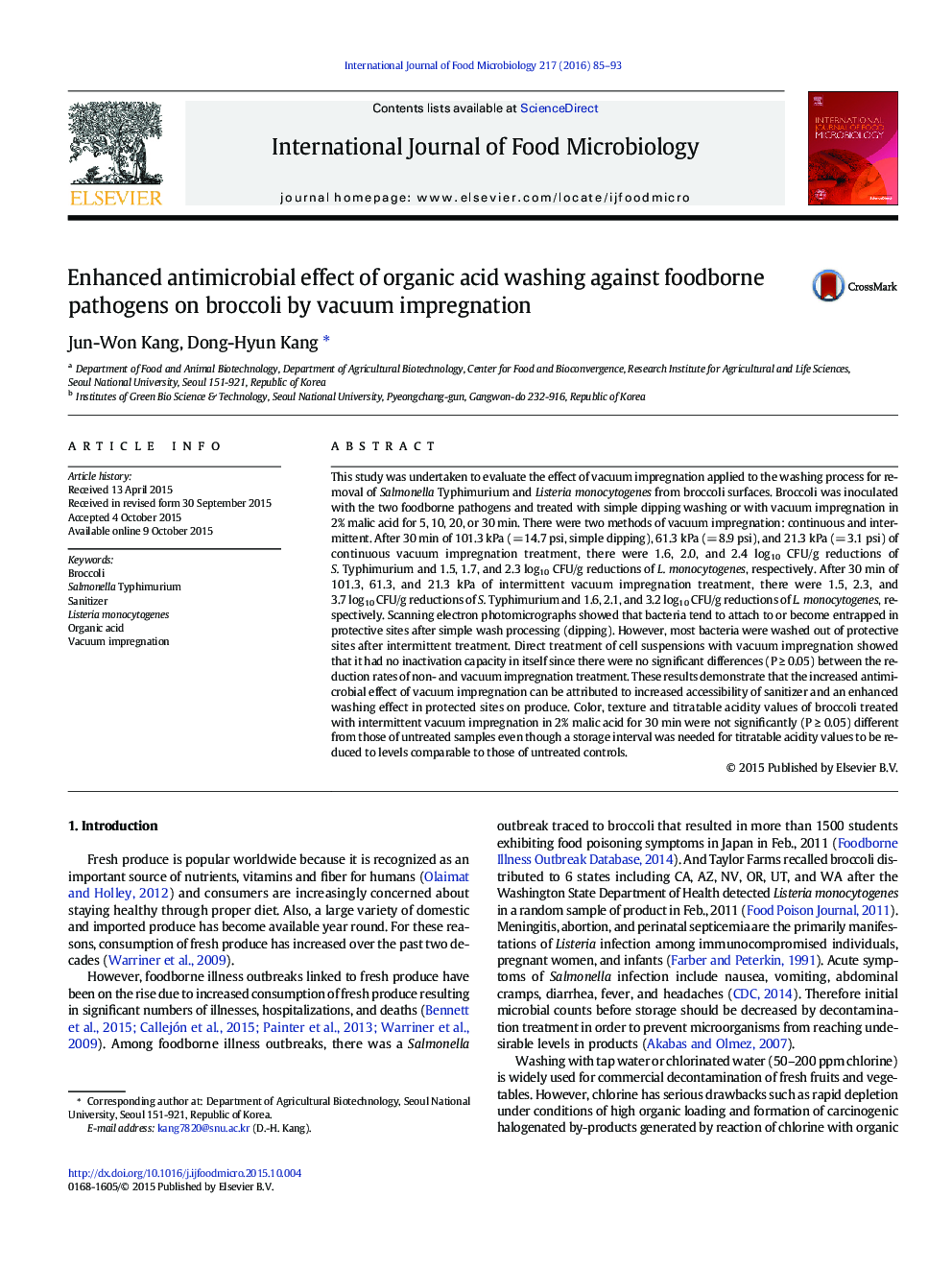| کد مقاله | کد نشریه | سال انتشار | مقاله انگلیسی | نسخه تمام متن |
|---|---|---|---|---|
| 4366400 | 1616566 | 2016 | 9 صفحه PDF | دانلود رایگان |
• We compared the effect of dipping and vacuum impregnation washing on broccolis.
• We applied two vacuum impregnation treatment method: continuous and intermittent.
• After 30 min of continuous VI treatment, 1.6, 2.0, 2.4 log CFU/g reduction occured by 101.3, 61.3, 21.3 kPa, respectively.
• After 30 min of intermittent VI treatment, 1.5, 2.3, 3.7 log CFU/g reduction occured by 101.3, 61.3, 21.3 kPa, respectively.
• No significant changes of quality were observed after VI treatment.
This study was undertaken to evaluate the effect of vacuum impregnation applied to the washing process for removal of Salmonella Typhimurium and Listeria monocytogenes from broccoli surfaces. Broccoli was inoculated with the two foodborne pathogens and treated with simple dipping washing or with vacuum impregnation in 2% malic acid for 5, 10, 20, or 30 min. There were two methods of vacuum impregnation: continuous and intermittent. After 30 min of 101.3 kPa (= 14.7 psi, simple dipping), 61.3 kPa (= 8.9 psi), and 21.3 kPa (= 3.1 psi) of continuous vacuum impregnation treatment, there were 1.6, 2.0, and 2.4 log10 CFU/g reductions of S. Typhimurium and 1.5, 1.7, and 2.3 log10 CFU/g reductions of L. monocytogenes, respectively. After 30 min of 101.3, 61.3, and 21.3 kPa of intermittent vacuum impregnation treatment, there were 1.5, 2.3, and 3.7 log10 CFU/g reductions of S. Typhimurium and 1.6, 2.1, and 3.2 log10 CFU/g reductions of L. monocytogenes, respectively. Scanning electron photomicrographs showed that bacteria tend to attach to or become entrapped in protective sites after simple wash processing (dipping). However, most bacteria were washed out of protective sites after intermittent treatment. Direct treatment of cell suspensions with vacuum impregnation showed that it had no inactivation capacity in itself since there were no significant differences (P ≥ 0.05) between the reduction rates of non- and vacuum impregnation treatment. These results demonstrate that the increased antimicrobial effect of vacuum impregnation can be attributed to increased accessibility of sanitizer and an enhanced washing effect in protected sites on produce. Color, texture and titratable acidity values of broccoli treated with intermittent vacuum impregnation in 2% malic acid for 30 min were not significantly (P ≥ 0.05) different from those of untreated samples even though a storage interval was needed for titratable acidity values to be reduced to levels comparable to those of untreated controls.
Journal: International Journal of Food Microbiology - Volume 217, 18 January 2016, Pages 85–93
